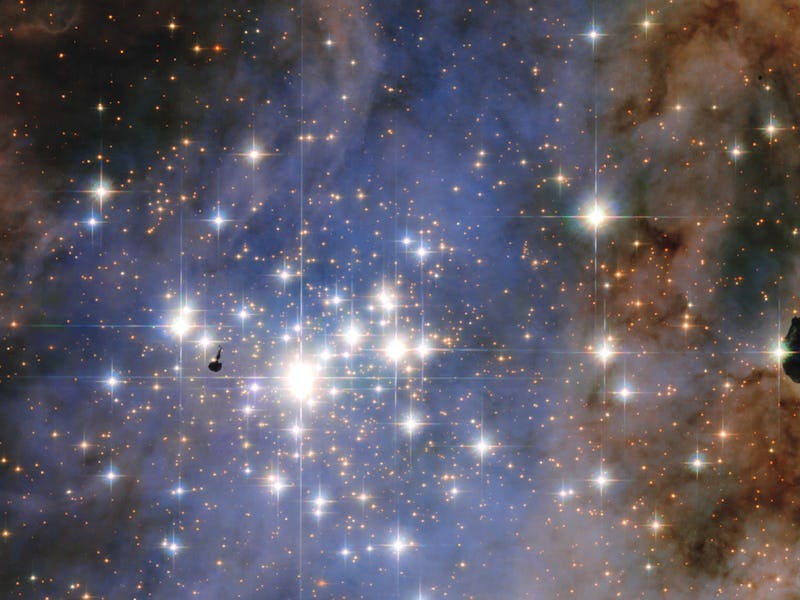Nanodiamonds Powering the Milky Way's Strange Glow Have Earth-Like Origins
A 20-year mystery is solved.

The fact that humans spend roughly $80 billion on diamonds each year makes recent news from Green Bank Observatory researchers hard to swallow. In a new Nature Astronomy paper, they show that the mysteriously sparkling glow emanating from several regions of the Milky Way is caused by a generous dusting of tiny diamonds, the most shimmery things known to humankind, across certain parts of the galaxy.
Since the soft glow was first detected in images of the Milky Way 20 years ago, scientists have determined that it’s made up of microwave emissions, but those emissions had to come from something — scientists just didn’t know what. Now, thanks to data on the emissions of the protoplanetary disks surrounding three young stars in the Milky Way, all of which show off the mysterious telltale glow, the researchers can confirm in their paper: the glow is from a galactic dusting of diamond dust.
“It has been challenging over the last 20 years to associate particular sources with AME (anomalous microwave emission),” study co-author David T. Frayer, Ph.D., a scientist at Green Bank Observatory in West Virginia, tells Inverse in an email. “Our group observed a set of stars and found AME in 3 stars that also showed infrared spectral features associated with ‘nano-diamonds’.”
Nanodiamonds are responsible for the strange microwave emissions that have perplexed scientists for 20 years.
Unlike diamonds on Earth, space diamonds are as multitudinous as sand. “Yes, nano-diamonds are believed to be common within space (interstellar medium) and are found in solar system meteorites,” says Frayer. They are, however, formed in much the same way as they are on our home planet.
In a statement, Green Bank Observatory experts explained: “Nanodiamonds likely form out of a superheated vapor of carbon atoms in highly energized star-forming regions. This is not unlike industrial methods of creating nanodiamonds on Earth.” Diamonds, for all the cultural weight we foist onto them, are just bits of carbon pressured into forming organized crystals, which is easier to do in the high-pressure, high-heat conditions of planetary formation.
About 1 to 2 percent of the carbon in the protoplanetary disks surrounding young stars goes into nanodiamond formation, the scientists note. These clouds of stellar gas and dust eventually go on to form planets (hence, protoplanets) and other celestial bodies. Sometimes, the nanodiamonds get folded into those space objects, like dazzling meteorites that fall to Earth.
One of the young stars that the team observed was HD 97048, shown here with its AME glow.
Previous studies on the strange microwave glow suggested it emanated from other types of molecules, namely polycyclic aromatic hydrocarbons (PAHs, which are released into our own atmosphere by burning fossil fuels), nano-silicon, and nano-iron. But microwave emissions are very particular to the type of compound that creates them, and the team’s analysis of the protoplanetary disks allowed them to rule out those options. “[We] did not find AME correlated with PAHs for this sample, and instead found an apparent correlation with sources with nano-diamonds,” says Frayer.
In addition to pointing astronomers toward well-stocked diamond mines in our galaxy, this study inadvertently gives us a glimpse into the role of diamonds in the formation of star systems, which the team plans to investigate in future studies. “It’s even more interesting that it was obtained by looking at protoplanetary disks,” said lead author and Cardiff University astronomer Jane Greaves, Ph.D., in a statement published Tuesday, “shedding light on the chemical features of early solar systems, including our own.”